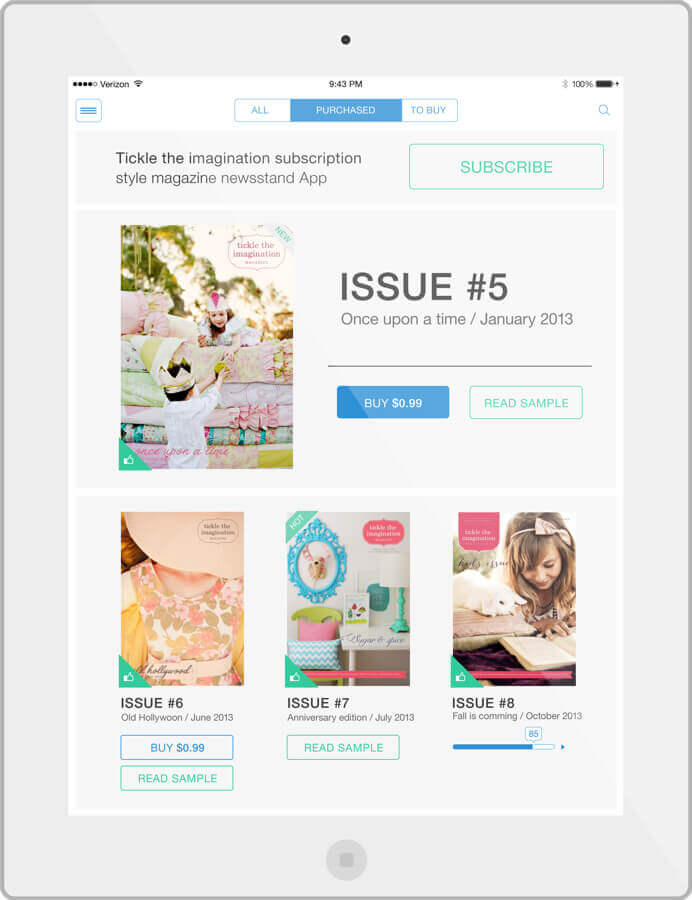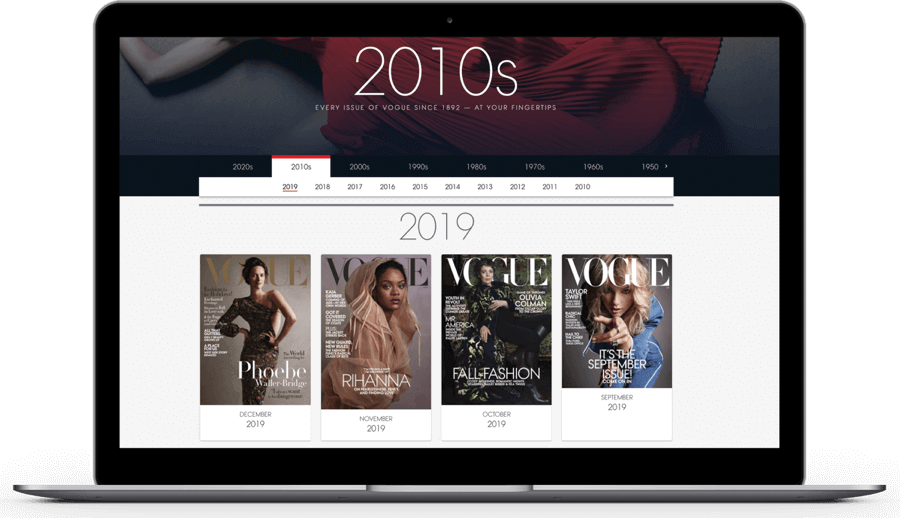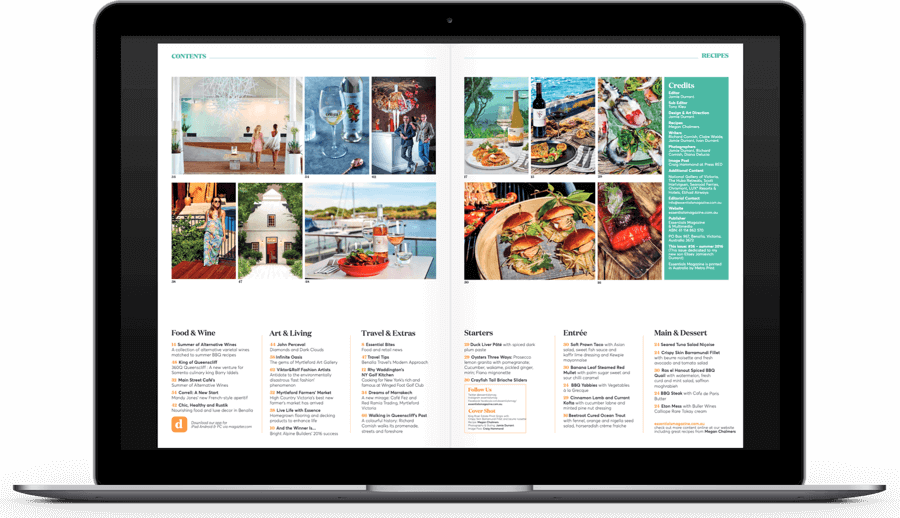Modern publishing is something more than a choice between print and digital. The debates taking place in recent years about whether digital will replace print and when it will come should really be a discussion about the proportions of demand for these two publishing versions. If you want to run a print magazine online, it doesn’t have to mean reducing or eliminating paper editions – it’ll be more like a distribution extension and maybe a path to sustaining your newsroom in the digital future.
Print magazine online as a subject of particular interest raises some doubts. These are related to the role it plays in the publishing business, the PDF replicas usage, the safety of the distribution process, and the availability of this solution.
This article aims to clarify the above doubts and answer questions many publishers asked about print magazines online. Do you want to get the whole truth about it?
Print to digital publishing – is it a proper direction for magazines?
In the beginning – let’s clarify one thing.
Print magazine online is a term that refers to an electronic version of a print publication. It can be an exact page-by-page replica or a version extended by features characteristic for digital publishing like availability of the rich media and interactivity. Basically, many of both mainstream and niche print magazines have their own online versions which are sources of revenue or fuels driving the selling of primary issues.

According to Statista, despite the fact that newspaper publishing revenue in the United States is still made up mostly by print, they fall each year as digital increases. If this trend persists, digital newspaper publishing could account for 50 percent of the total revenue figure in just a few years, and more in the following.
Understanding the reality of today’s digital media world, its changes, and also disruptions leads publishers to consider preparing print magazines online. When these publications support the customer’s habits, usage, wants, and needs, their chance to succeed is growing.
Print magazine online – the whole truth
1. Digital edition of a print magazine is its strong support
There have been discussions about the future of printing over recent years – whether it will die or not, and if yes, when it will happen; what will be the role of digital publishing platforms and if they’ll replace traditional publishing completely. Do you remember the debates about whether radio will be replaced with television, and afterward, television with the Internet? I guess you’ll agree with me that all of these three channels are doing quite well for now.
In fact, this discussion is not about replacing one channel with another at all, but about the proportions of demand for these wares. Similarly, it’s not about replacing print magazines with their digital version, but the number of readers interested in each format – now and in the future.
Print magazine online doesn’t mean the resignation from the original one – this is its extension opening new possibilities in various publishing business fields. These both ways aren’t mutually exclusive – they interact with each other. That’s why selling both print and digital magazines online at the same time makes sense.
Do you want to see an example of a well-known world brand, where the print is still the leader, and digital is only a catalyst for selling it?
Here you go.

Vogue. Online content is a catalyst for selling print magazines. Their digital subscription strategy is a combination of print and digital access in two different paid options. The digital version is a nod to changes happening in the publishing industry and the sign that they keep up with these trends, while the print remains a base.
Another example is Rolling Stone magazine. They offer access to the eEdition of the print magazine online and it remains only a part of their subscription strategy which is more extended.
Print magazine online opens up many opportunities:
- Expanding audiences – print magazine online is a way to reach a new audience that is more tech-savvy or prefers reading on the desktop.
- Widening content distribution – readers have access to the whole library full of old numbers and materials while buying them in print is almost impossible.
- Building stronger relations with fans – you’ll be able to reach and engage your audience effectively, as well as converting them into subscribers, social followers, and regular website visitors.
- Extending monetization strategies – digital publishing offers more earning options e.g. advertising, affiliate programs, memberships, and subscription.
- Offering value-added content – readers can enjoy additional, enriching content with interactive media, what is the reason for existing print readers to visit the digital version.
- Increasing website traffic – you’ll be present on the Internet on a bigger scale, and indexed by search engines what drives traffic to your website, giving you the ability to become a thought leader within your niche.
- Getting deep analytics – tracking and measuring the magazine’s performance, and readers’ behaviors helping with refining strategies is much more effective when you’re in digital publishing.
2. PDF replica of a print magazine online has a vantage
How many times have you heard or read that using PDF files to create a digital magazine causes its poor quality?
This is one of the most common digital print myths. In fact, the digital magazine can overcome the seeming obstacles of a PDF format. Take a look at examples of e-kiosk flipbooks we made for our customers:
Each of the above stores is based on interactive PDF in HD quality providing an enjoyable reading experience in modern website browsers. Is there any decline in quality there?

Just the opposite, readers can enjoy PDF content with flexible zooming and easy navigation with thumbnails in excellent quality. Colors are retained precisely regardless of software or hardware variation, as well as original style and formatting.
What are the benefits of creating a print magazine online using a PDF file?
- Digital publishing solutions based on PDFs are easy, fast, and effective ways to create a replica of your printed edition. It’s a nod for all the busy publishers – they don’t need to know technological stuff or hire someone to do it, because it’s extremely easy to take an existing printed magazine and digitize it using a PDF file.
- PDF documents can be embedded on websites/blogs and can simulate the flipping of pages, just like a printed edition.
- HD rendering of PDFs lets readers enjoy your content with flexible zooming and easy navigation with thumbnails.
Hint: PressPad’s solutions are based on quick and easy uploading PDF files. The only thing publishers have to do is upload the publication in PDF format to their accounts. The control panel is easy to use, and the work requires no more than 2-3 minutes per month. However, we’re always happy to help with it.
– Do readers really enjoy the digital edition of the print magazine? – you may ask.
Creating a digital version of the print magazine won’t ensure a sustainable future for publishers. It should be accompanied by investment in better digital experiences for readers. The digital version not only can but should differ from the printed counterpart. Digitalization means you have a range of possibilities of new technologies to attract readers.
Let’s look again at Vogue (because it’s a good example). While its print issues include long, detailed interviews with celebrities and in-depth articles, in the digital version we can find additional online micro-content, such as easy to share Q&A videos.
PDF content interactivity is a must when you want to win.
Studies show that readers prefer reading an online magazine due to some advanced features such as scrollable text, hyperlinks, clickable links, access to back-issue, vertical swipe, ability to copy and paste, article bookmarking, video, live news, and interactive content.
If you want to add hyperlinks to your PDF magazine to create an interactive magazine, see this short video guide.
Print magazines online have a power that publishers should use: rich media can attract readers, hyperlinks can help them to navigate throughout your publication, and links to Soundcloud, Vimeo, or SlideShare can sustain the attention inside a magazine.
3. Publishing PDF content on the Internet is controlled and safe
There was a belief for a while, that resources published on the Internet should be free. Fortunately, this approach has changed over the years and people are increasingly willing to pay for what they need or are interested in. Consequently, the popularity of subscription strategies is growing.
The fact that you publish a print magazine online means nothing less than that you can monetize on it and, moreover, paying for access can be the only option to see it. Of course, there’re publishers offering digital content for free – it is a feature that is an incentive to buy something else (e.g. print issue). Publishers do it also when their main monetization method is advertising.
Point is, if you use PDF to create print magazines online, your publication published on the Internet can avoid uncontrolled spread.
Let’s take a look at how it works on the PressPad Store example. It’s a full eCommerce platform for PDF publications with card payments via PayPal or Stripe.
One of the goals of using the PressPad Store is to avoid sending PDFs by readers to anyone outside. People can’t share the files, or post them on torrent sites for free downloading by others – they can read in the browser without downloading a PDF file. The conditions of access are up to you. You can offer free access or sell single items and auto-renewable subscriptions.
Hint: In the spirit of caring for the security of mobile content, we offer our customers an option that prevents mobile apps users from taking a screenshot, thus, pass the app content on. The only way to see the magazine content inside the app is to download it or purchase access.
4. Print magazine online is access is at the hand of every type of publishers, not only the biggest ones
Digital transformation isn’t about becoming an entirely different company but rather using technology to improve and expand the company’s core strengths.
No one says you have to start out like publishing giants, with spectacularly innovative own digital magazine platforms – you can ease into the digital publishing age with a simple digital print replica online magazine, and still satisfy your readers, your advertisers, and yourself.
If you’re a smaller publisher, a PDF digital replica magazine idea is made for you.
If you have a PDF version of a print, most of the publishing effort is already done. Also, if you haven’t got a huge budget, you don’t have to base on paid promotion. The value you’ve been building for years is your personal brand – use it thanks to LinkedIn.
As an experienced publisher, you’ve got an advantage in the form of existing channels for the promotion: print publications, newsletters, emails, social media channels – thanks to them you can change print magazine readers into digital and… vice versa.
The digital version of the print is a good option for local, niche, or smaller publishers – it opens the possibilities of world distribution. Not always your buyers live in your area – maybe they used to live there but still are interested in news.
5. Online publishing business reflects the print in many aspects
If you have been in publishing for years, the transition from the print magazine into digital won’t be a 180 degrees change for you but will be a continuation of what you’ve already known well. After all, it is publishing, right? Only the form of distribution changes.
There are many touchpoints where these two worlds (print and digital) overlap. It’s important to underline that they are quite alike in the fundamental things:
- these are media that require a marketing strategy (by connecting print and digital issues you can offer great cross-promo actions),
- every publisher has to take care of their readers (whether they prefer print or digital), analyze the data, know the audience’s needs, and answer them,
- it’s all about calculating costs and savings, working with advertisers, and deciding on the pricing of an issue or subscription,
- the quality and type of content you offer is always important, no matter what kind of distribution you choose,
- ultimately, everything is about the senses – when we ask people what they love in print, they often talk about the smell; in digital, images and interactivity play the main roles,
- print and digital magazine influence buying decisions and enhance user engagement,
- print as well as digital means costs and profits.
Above all, both print and digital publishing are businesses, you run, engage in and, with high probability, want to develop. Your print experience will be invaluable in running a print magazine online.
All roads lead to… publishing
Without print publishing, digital wouldn’t exist. We believe that these two worlds complement each other. Which one you’ll choose, should depend only on your readers and their needs.
After all, the success of your print magazine online will be a reflection on how good content you’ll create and how well it will be adjusted to your readers. If you provide superior content that engages and inspires, readers will keep coming back for more and you’ll achieve your goals. The key is to leverage data-driven insights about consumer behavior to determine the best mix of online and offline channels.
Sometimes, the decision to have a print magazine online is treated as making planned, proactive decisions about downscaling print as a step toward a long-term digital future.
If you want to set off on such a journey, we can accompany you –just let us know.

